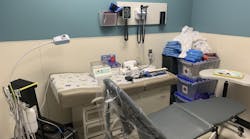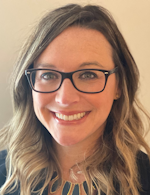Mobile, portable, and teledentistry’s critical role in public health hygiene
Editor’s note: This is part three of a six-part series that highlights public health and advocacy for the dental hygienist. Future articles will be published in the coming months in RDH magazine.
Part 1: Public health and advocacy for the dental hygienist
Part 2: Fluoride and sealants: How these preventive tools are helping our pediatric patients
One of the great things about the dental hygiene profession is the creativity that comes with practicing. There are so many variations in the type of care we provide and the settings in which we provide that care. There are private and public health settings, where hygienists provide dental and educational services. Public health hygiene is a topic near and dear to my heart, as I am a public health hygienist. Being able to provide dental hygiene care to vulnerable populations is rewarding and humbling.
Breaking out of the brick-and-mortar practice is critical in the public health setting, and delivery methods for dentistry are evolving. Three emerging delivery methods are mobile, portable, and teledentistry services. I will evaluate each of these to see how they support the delivery of dental care to patients.
Before we dive into the details of dental delivery methods, I want to reflect on why it is so important to take dentistry mobile. While it may be convenient for patients to visit dental offices for their preventive care every six months, and for the occasional restorative appointment, that is not the case for many Americans. The reasons vary and are not limited to the public health setting. However, dental caries remains the number one chronic childhood disease year after year.1 This alone tells us something must change. If we work together to create alternative paths for patients to receive oral health care, we will make an impact on reducing dental disease.
Mobile dentistry opportunities
What is mobile dentistry? The simple answer: it’s dentistry on the move that brings care and education to patients. No two programs look the same, but that’s the beauty of this service. For some providers, mobile dentistry includes vans and RVs that are outfitted for dental services. Some of these vehicles are truly dental offices on wheels. Knowing what to create comes down to knowing your budget, the services you want to offer, and the population you want to serve.
Mobile dentistry is a great option for hygienists looking for new opportunities, as well as reducing the barriers to care. Many barriers exist for the most vulnerable populations who want to receive dental care. A review by the Journal of Clinical & Diagnostic Research notes children and elderly from low socioeconomic families exhibit significant levels of decay, experience limited access to care, often lack transportation, and have high no-show rates.2 The same review suggests that based on research, some children, despite having insurance, are not receiving dental care because their parents or caregivers are not able to get them to the dentist or lack the motivation to find a dentist.2
Another population that can be greatly served with mobile dentistry is those with special needs. An article published in the International Journal of Dentistry notes that people with disabilities tend to have greater oral health problems compared to those without disabilities. It states this may be due to barriers they encounter when trying to access dental services.3 One barrier is that structural problems of access to dental offices remains a challenge for many in the special needs community.3
Mobile providers can be instrumental in bringing dental services and education to these populations, and coordinating care as needed. Mobile dentistry allows dental professionals to create dental touchpoints for patients. In the mobile setting, the hygienist often serves as the first form of exposure to oral health education and plays an integral part of patient-centered care. Many mobile programs offer hygiene services in schools, assisted living facilities, nursing homes, Head Start programs, homeless shelters, public housing sites, and even a patient’s front door.
Of course, mobile programs vary based on state rules and regulations, so it’s imperative to understand your state’s requirements. The bottom line is that mobile dentistry is the “how” in addressing the access to care issue in our country. Mobile dentistry truly is the future for dentistry, and as hygienists we’re in a unique and exciting position to set ourselves and communities on the path toward care and wellness. Learn about the organizations that allow mobile providers to network, support, and learn from one another.
Portable dental equipment
Many mobile practices provide care to their patients through portable equipment. Portable equipment is any equipment transported around to various locations. For someone planning to offer exams and assessments, a chair may be their only necessary equipment. In contrast, a mobile model in a nursing home or assisted living facility will require more equipment, such as a patient chair, a compressor with a magnetostrictive or piezoelectric scaler, and a sterilizer.
There are many things to consider with a school-based program, such as portable equipment to take routine radiographs, which will require sensors, and that can be a big investment. There are several pieces to the mobile puzzle, and that’s where networking with your fellow hygienists becomes critical.
Teledentistry
Another exciting aspect of mobile dentistry is teledentistry, which is complementary to the practice of mobile dental and dental hygiene services. It allows the hygienist to see the patient and communicate with a collaborating dentist, whether through synchronous or asynchronous methods. Synchronous teledentistry is done in real time, and asynchronous is the store-and-forward method.
Most mobile programs use asynchronous teledentistry. During COVID-19, many providers are seeing patients via synchronous teledentistry. Shared images may include intraoral images taken with an intraoral camera, images taken with a patient’s phone, and/or radiographs. A picture is worth a thousand words, and this could not be truer than in teledentistry. The ability to send a parent or caregiver a report that includes pictures and highlights the needs of their loved one is crucial in encouraging restorative care. Teledentistry and intraoral images are often the motivating factors in patients completing treatment plans.
Mobile dentistry has an exciting future full of innovators, visionaries, and entrepreneurs who are all creating solutions for patients. Mobile dentistry provides hygienists with the ability to fulfill an entrepreneurial spirit and create the model of care they want for their patients. It is imperative for you to follow your state’s regulations and be transparent with your state board of dentistry. As dental hygienists, we’re in a pivotal position to pave our own way in the mobile dentistry world.
Finding a strong network of mobile dental providers is an asset when starting a mobile practice. There is much success to be found in the mobile dentistry world. If you’re working with the public sector, that success is obvious because many patients would not be able to receive care any other way. Success is clear in the private sector as well, where the goal is to remove as many inconveniences as possible. Mobile dentistry has come a long way in the last five to 10 years, and it’s an exciting time to be in this area of dentistry. The future of mobile dentistry is full of opportunity, and I’m certain that if we are creative with ways to execute care beyond the traditional dental office, we will succeed in providing critical care to our patients and communities.
References
1. Oral Health. Centers for Disease Control and Prevention. Reviewed May 29, 2019. https://www.cdc.gov/healthyschools/npao/oralhealth.htm
2. Vashishtha V, Kote S, Basavaraj P, Singla A, Pandita V, Malhi RK. Reach the unreached–A systematic review on mobile dental units. J Clinical Diagn Res. 2014;8(8):ZE05-ZE08. doi: 10.7860/JCDR/2014/8688.4717
3. de Rosa SF, Moyses SJ, Theis LC, et al. Barriers in access to dental services hindering the treatment of people with disabilities: A systematic review. Int J Dent. 2020;(7). doi: 10.1155/2020/9074618
BROOKE CROUCH, RDH, is a remote supervision dental hygienist with more than a decade of clinical experience in private practice, a state agency, and a federally qualified health center (FQHC). Crouch is an adjunct instructor and mobile dentistry consultant. She is vice president of the American Mobile & Teledentistry Alliance and she serves on several clinical advisory, oral health action, and community-based boards and committees throughout Virginia. Contact her at [email protected] or on her various social media at brookecrouchrdh.







